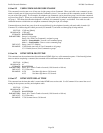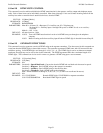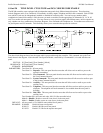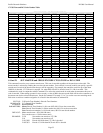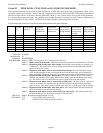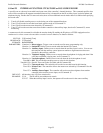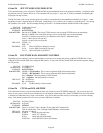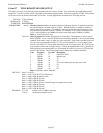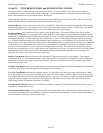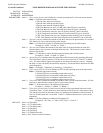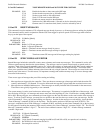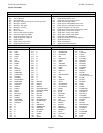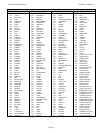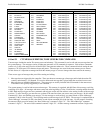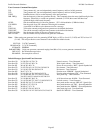
Pacific Research Solutions RI-300e User Manual
Page 58
S-Cmd 28 TONE REMOTE MODE and NOTCH FILTER CONTROL
This feature is used to define the mode of the tone remote decoder. As a tone decoder, each of the 8 tones as defined in
S-Command 27 is used to set and clear user bits 17 through 24, (see S-Command 45). In any the tone remote modes listed
below, all decoded tones will operate the user bits 17 through 24.
When using any of the tone remote modes, you may need to add a notch filter (NF-3) to the controller. This circuit will strip
away the 2150 Hz PTT tone so that the user will not hear this tone over the air.
Tone Decode
mode is used to decode tones set up by S-Command 27. When a tone is decoded, the controller will run a macro
defined by S-Command 45. For example, you can set the receiver tone decode mode to decode a 1750 Hz tone. A successful
decode of 1750 Hz would be used to trigger a macro that would allow access to the repeater.
Telephone Linking
tone remote mode may be used as a dial up tone remote. This mode will allow you to link to another
RI-300 or RI-310 controller over a telephone line. In this mode, PTT control signals are passed between controllers in a tone
remote format. Set the telephone incoming call S-Command 71 to mode 2 or higher, and enable S-Command 28 0 mode 4 and
S-Command 28 4 mode 3 on both controllers. Set S-Command 70 to mode 5 on the calling controller, and start an outgoing
call. When the controllers connect, they will handshake with the monitor tone. Use S-Command 45 to build a macro to adjust
timers and play a message over the air to let the user know that telephone linking is operating when the monitor tone is detected.
At this point, you can communicate in the same manner as you would with a radio link. In this mode, the telephone off hook
time out timer (S-Command 77) is used to limit the total length of the connection. The telephone no-activity time-out timer
may be used to disconnect the call, if a period of time occurs without receiver activity. You can use this mode with the standard
telephone call mode by setting up this mode in the telephone linking command and resetting this mode on hang up of the
telephone. See section 15 for more information on this mode.
Receiver Tone Remote
mode may be used in the same manner as tone squelch for access to the repeater. Tone squelch
(CTCSS and DCS) may be used with this mode. In this mode, the PTT tone defined by S-Command 27 is used to enable the
COS signal, allowing receiver audio to pass in the controller. This mode will affect all areas in the controller where COS is
used to switch or route audio.
Auxiliary Tone Remote
mode is used enable auxiliary audio to the repeater TX when the PTT tone defined by S-Command 27
is detected. This mode works in the same manner as the receiver tone remote.
Two Wire Tone Remote
mode uses the telephone interface as a dedicated 2-Wire half duplex tone remote interface. In this
mode, the telephone is always off hook and ready to pass audio when the PTT tone is detected. When receiver audio is active,
the controller will send the PTT tone out the telephone interface. You can use this mode to connect two repeaters with RI-300
or RI-310 controllers together via a dedicated 2-wire connection. This mode can also be used with a tone remote hand set.
When using this mode, all telephone operations are disabled.
Tone Remote PTT Encode
mode is used to enable the controller to send the PTT tone when the associated output is active. S-
Command 27 1 defines the PTT tone.
Tone Encode and Burst time
is used to control the burst of a tone that will be used at another end for selecting functions. You
can execute S-Command 28 6 [Tone number] in a macro to send that tone for the burst time. The tone remote decode mode is
used to determine to where this tone burst will be sent.



